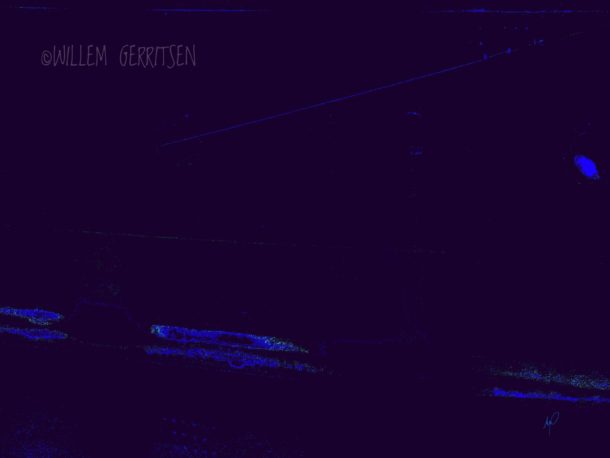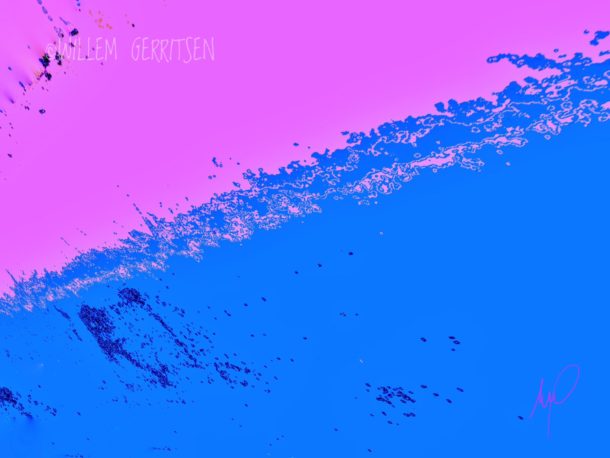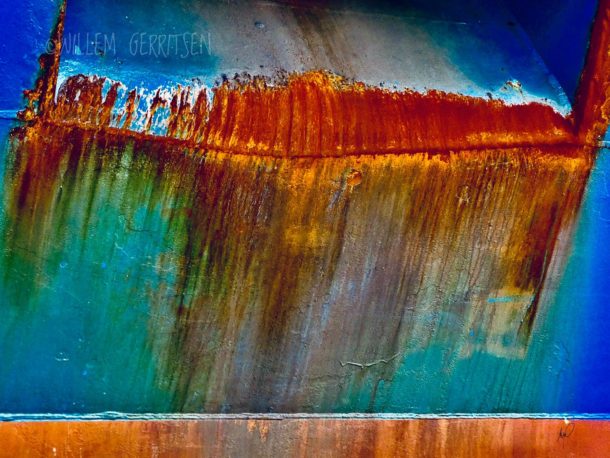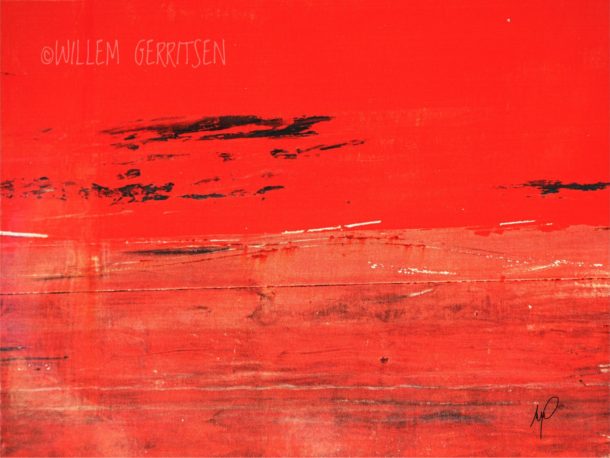World Fine Art Professionals and their Key-Pieces, 465 - Willem Gerritsen
World Fine Art Professionals and their Key-Pieces, 465 – Willem Gerritsen
At Rotterdam Photo 2024 my gaze lingered on large photo works of ships. The ‘ship’s skin’ was zoomed in in an almost abstract manner. I got the idea that the maker would be a real Rotterdammer.
A few weeks later I met the maker, Willem Gerritsen, in his beautiful apartment on the 14th floor of one of the harbors not far from the Old Harbor (Oude Haven). There were a number of smaller ships in front of his tall apartment tower.
A photographer’s club
At the round table – with a translucent glass chandelier above us with red elements in between – I hear that Willem Gerritsen has only been living in Rotterdam since 2019. A few years after his retirement, he moved with his wife from the area surrounding the city of Utrecht to the port city.
Gerritsen: “I was part of a photographer’s club. Once a year we went out for a photo day and a jury decided who had taken the most beautiful photo of the day. I usually ended up somewhere at the bottom. One of those trips went to Rotterdam, to the ports. There was so much to photograph: ships, installations, mountains of scrap metal, mountains of coal.”
A red piece of ship’s skin
On that occasion he took a photo of a red piece of ship’s skin, which looked like an abstract painting. He shows it. “It’s unedited. The jury didn’t like it again, but I thought it was beautiful. After we moved to Rotterdam at the end of 2019, the idea stuck and I often started photographing ships. For me, the harbor is a kind of gallery where you have the most beautiful paintings for the taking. Sometimes nothing more needs to be done to such a photo, but usually it does. “
He was going to turn it into some kind of project. “The Maritime Museum is nearby. Beautiful ships lie in front of the door. In 15 minutes you can reach the Parkhaven with smaller seagoing vessels. You don’t even have to go to the major ports. I started it very naively. I came home with materials and started tinkering. I had the printing and production of the photo of the red ship’s skin carried out by a laboratory in Amsterdam. It is printed on special paper and glued behind anti-reflective acrylic. I was happy with the result. Other ship photos that were on display during the exhibition were produced by a Rotterdam company.”
He felt like an artist. “The end result had to be very good. They are unique copies that I was going to sign.” I see it in one of the works hanging on the wall, a signature in the lower right corner.
Sculpting
He had been artistically active before, with sculpting. At the beginning of this century he took lessons from Hans van Belle and Alice Musarara to master the principles. “Alice Musarara comes from Tengenenge, Zimbabwe, the area of the beautiful, soft serpentine stone. It is a beautiful stone, the colors come alive if you finish it with beeswax, for example. I learned the craft there. I learned two important things in particular: first, distance myself. Take five/six steps back and look. Then you will see how to proceed. And I also learned how to create a sculpture. You can make a drawing in advance and then get started, but you can also let the stone speak. You start working on the stone to arrive at the shape that is essentially already there.” Later I see a beautiful statue of a woman in the hallway that only took shape after two/three years when he discovered where it should go.
Looking for the core
He now applies the lessons he learned through sculpting to his photographs. He’s going to edit it to see what the gist is. He discovered that the same process actually took place in his career. “I used to be a psychiatrist. You talk to people and an image emerges. These are parallel processes. I had to write an explanation for the exhibition. That also provided insight into how the creative process gets started.”
The Willem de Kooning Academy is not so far from his house. “I don’t have that background. At HBS (high school) I had drawing lessons with Mr. De Groot. ‘Draw something about sadness’, ‘about loneliness’, he asked us. I found that uncomfortable. But one day he showed a slide of a stack of pipes. That made a lasting impression. That you show that. That someone comes up with the idea of photographing something as ordinary as pipes and showing their beauty. That’s how I want to photograph, but I don’t want to repeat myself. That’s why I always look for an original angle.”
Finally, what is his philosophy?
“Art is something that should make people happy, or at least that is what I strive for in my work. Many artists highlight the dark sides of their own existence and the world. I do not want that. I like it when the people at my work become a little happy.”
Images
Artworks Willem Gerritsen, photo 9: Willem Gerritsen
https://www.jwgfotopaintings.com/
https://inzaken.eu/2024/04/29/willem-gerritsen-zoomt-in-op-de-scheepshuid/
Disclaimer: The views, opinions and positions expressed within this guest article are those of the author Walter van Teeffelen alone and do not represent those of the Marbella Marbella website. The accuracy, completeness and validity of any statements made within this article are not guaranteed. We accept no liability for any errors, omissions or representations. The copyright of this content belongs to Walter van Teeffelen and any liability with regards to infringement of intellectual property rights remains with the author.

























The opinions expressed by individual commentators and contributors do not necessarily constitute this website's position on the particular topic.